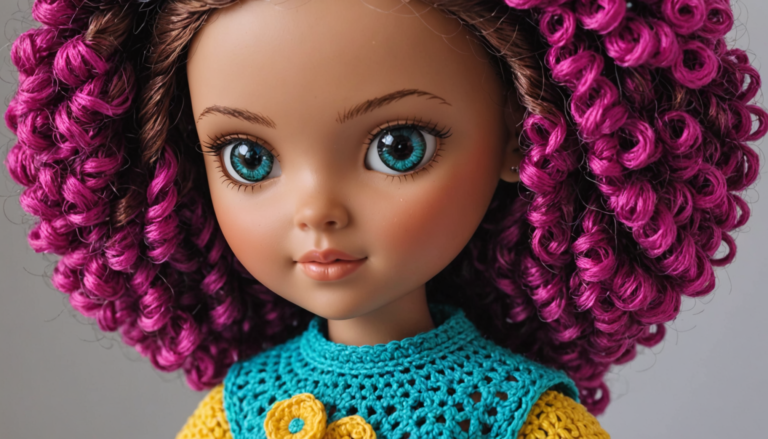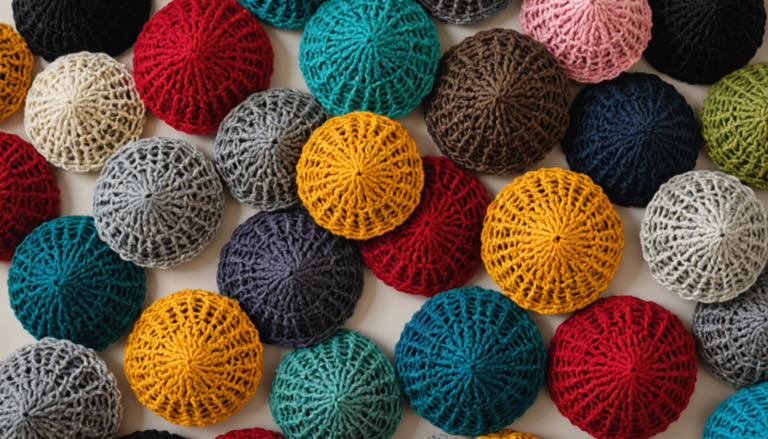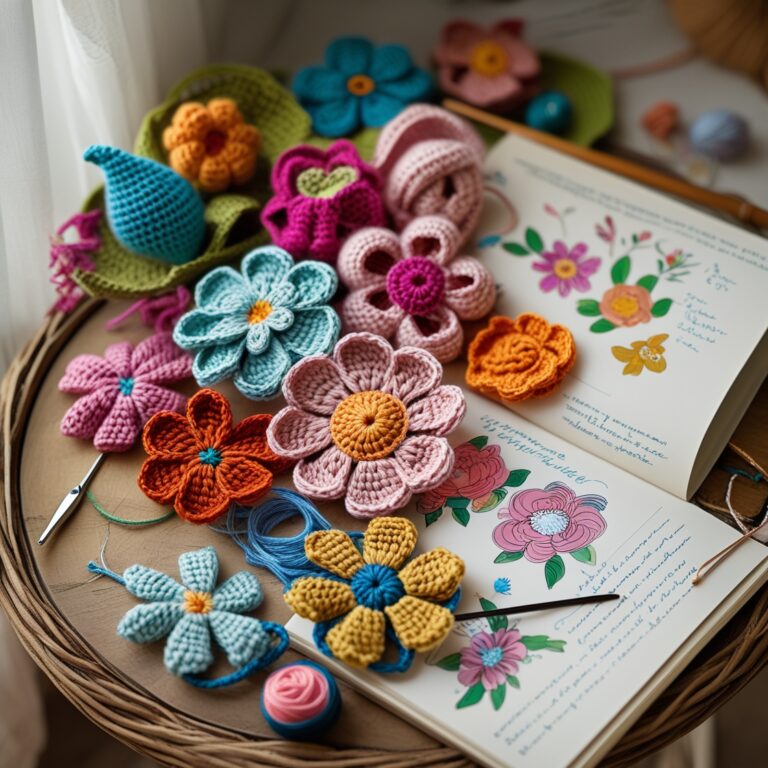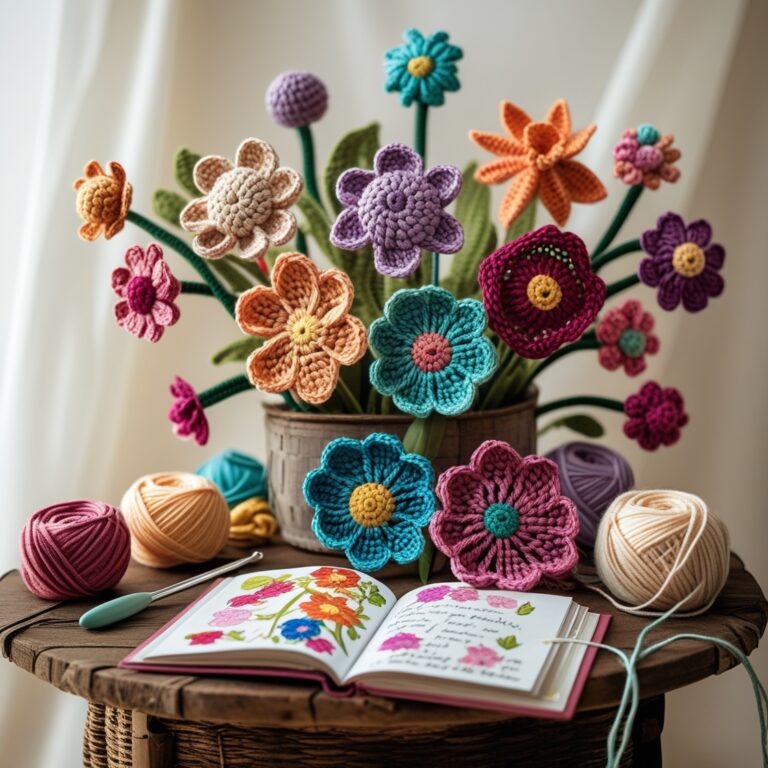”
Stunning Crochet Flower Patterns: A Comprehensive Guide for Beginners and Experts
Discover the enchanting world of crochet flowers! This guide offers a diverse collection of patterns, catering to both novice crocheters eager to learn and experienced crafters seeking new challenges and inspiration. We’ll explore fundamental techniques, delve into intricate designs, and provide troubleshooting tips to ensure your floral creations bloom beautifully.
Understanding the Basics of Crochet Flowers
Before diving into specific patterns, let’s establish a solid foundation. Crochet flowers are decorative elements created using yarn and a crochet hook. They range from simple, single-petal designs to complex, multi-layered masterpieces. The benefits are numerous: they add a touch of elegance to garments, blankets, and home décor; offer endless customization opportunities through yarn choice and embellishments; and provide a fantastic way to hone your crochet skills.
Essential Crochet Techniques: To successfully create crochet flowers, you’ll need to be familiar with several basic stitches:
- Single Crochet (sc): The foundation stitch, creating a tight, dense fabric.
- Double Crochet (dc): Taller than single crochet, resulting in a more open, airy fabric.
- Treble Crochet (tr): Even taller than double crochet, ideal for creating textured petals.
- Slip Stitch (sl st): Used to join rounds and create clean finishes.
- Chain (ch): Creates a foundation chain to begin your work.
- Magic Ring (mr): A technique used to create a seamless center for your flower. This avoids a visible join and results in a neater finish. Learning this technique is crucial for many of the patterns below.
Necessary Materials: Gather your supplies before you begin:
- Yarn: Choose a yarn weight appropriate for your chosen pattern. Acrylic yarns are affordable and easy to work with, while cotton offers a softer feel. Consider exploring different textures like chenille or variegated yarns for unique effects.
- Crochet Hook: Select a hook size that matches your yarn weight. The pattern instructions will usually specify the recommended hook size.
- Tapestry Needle: Essential for weaving in loose ends and attaching embellishments.
- Scissors: For cutting your yarn.
Easy Crochet Flower Patterns for Beginners
Let’s start with simple, beginner-friendly patterns perfect for building confidence and mastering basic techniques.
1. The Classic Simple Crochet Flower: This pattern uses the magic ring method and involves simple rounds of single crochet and increases. It’s a fantastic introduction to creating a basic flower shape. The small size makes it ideal for embellishing smaller projects.
2. Sweet Daisy Crochet Pattern: This charming flower uses a combination of single and double crochet to create delicate petals. Its simplicity makes it a quick project, even for beginners.
3. Puff Stitch Flowers: Puff stitches add texture and visual interest, creating a fuller, more substantial flower with minimal effort. Multiple puff stitch rounds can create a layered look.
4. Layered Petal Flower Design: This design introduces the concept of layering petals, creating a more dimensional flower. Beginners can adapt this by using fewer rounds to simplify the process.
5. Crochet Granny Square with a Floral Twist: Familiarize yourself with the classic granny square pattern. Then, instead of a plain corner, crochet a small flower into each corner, creating a beautiful, layered floral design. This combines two classic techniques for a surprisingly elegant result.
Advanced Crochet Flower Techniques for Experts
For experienced crocheters, we’ll explore more intricate techniques and designs that challenge your skills and creativity.
1. 3D Crocheted Flowers: Move beyond flat flowers and create stunning 3D designs. This involves creating individual petals and assembling them to form a fully dimensional bloom. Techniques like working in the round and shaping petals are crucial here.
2. Intricate Petal Shapes: Explore variations in petal shapes—pointed petals, rounded petals, ruffled petals—to create distinctive floral designs. Experiment with different stitch combinations to achieve these variations.
3. Realistic Flower Designs: Aim for realism by adding subtle details. Consider incorporating:
- Varying Petal Sizes: Mimic natural flower variations by creating petals of slightly different sizes.
- Color Changes: Use multiple shades of yarn to add depth and dimension.
- Embellishments: Add beads, sequins, or embroidery details to create stamens and other accents.
4. Combining Flowers into Larger Projects: Once you’ve mastered individual flower designs, create larger projects:
- Floral Garlands: Chain a long foundation and attach your flowers along the length.
- Crochet Flower Bouquet: Create a variety of differently sized and colored flowers to arrange into a beautiful bouquet.
- Flower Appliqués: Attach your flowers to clothing, bags, or blankets.
Practical Tips and Troubleshooting
Tips for Beginners:
- Practice your stitches: Before starting a project, practice the basic stitches until you feel comfortable.
- Use stitch markers: These help you keep track of your rounds and avoid mistakes.
- Don’t be afraid to frog (rip out) your work: If you make a mistake, it’s easier to undo it than to continue with an error.
- Blocking: Blocking helps to even out your stitches and give your flowers a professional finish.
Troubleshooting Advanced Issues:
- Uneven Petals: Ensure consistent tension throughout your work.
- Shaping 3D Flowers: Use stitch markers to track your progress and ensure even shaping.
- Attaching Embellishments: Securely attach beads or other embellishments to prevent them from falling off.
Common Materials and Substitutions:
Experiment with different yarns and hook sizes to achieve varied textures and effects. Consider substituting materials like ribbon or fabric scraps for unique results.
Conclusion
The world of crochet flowers is vast and varied. From simple, beginner-friendly designs to complex, intricate creations, there’s a crochet flower pattern for every skill level. Embrace your creativity, experiment with different techniques and materials, and enjoy the process of bringing these beautiful blossoms to life. Share your creations and inspire others! Happy crocheting!
Frequently Asked Questions (FAQ):
- Q: What is the best yarn for crochet flowers? A: Acrylic yarn is a great starting point for its affordability and ease of use. Cotton offers a softer feel, while more luxurious options like silk or merino wool can create stunning results.
- Q: How do I prevent my flowers from becoming too tight or too loose? A: Maintaining consistent tension is key. Practice your stitches until you find a comfortable tension that produces even stitches.
- Q: What if I make a mistake? A: Don’t worry! Simply frog (rip out) your work and start again. It’s a common part of the learning process.
- Q: Where can I find more free crochet flower patterns? A: Many websites and blogs offer free crochet patterns. Search online for “”free crochet flower patterns”” to find a wealth of resources.
“





